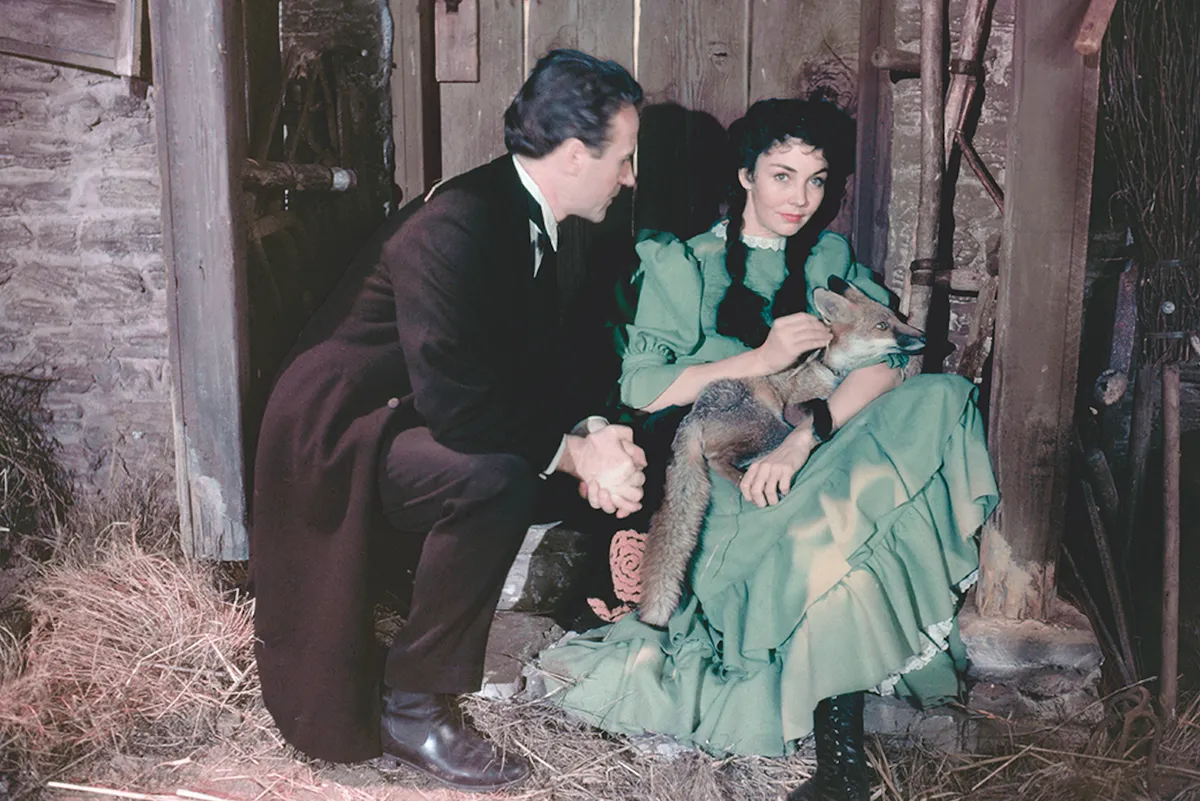As the last scene of Gone to Earth concludes, we are left with a notion of red. Red skirt, red-coats, red fox, red bracken, red sky. Technicolour was brand new when the film was released in 1950, and the cinematography vivid.
The film is based on the 1917 novel by Shropshire writer Mary Webb. Protagonist Hazel Woodus has passionate sympathy for vulnerable animals, birds and flowers but she is fought over by two men – Jack Reddin the fox-hunting squire, and good Edward Marston, the minister.
The combination of rural Shropshire and Hollywood glitter results in a curious but sumptuous film, the legacy of which is still celebrated locally. Although Webb’s original plot and social commentary were streamlined in the film, the landscape remains true to the book and is easily traceable now, with help from a good bus and footpath network.

Where was Gone to Earth filmed?
Squire Reddin’s home Undern is privately owned Longner Hall near Shrewsbury, occasionally open to visitors. The Severn Way takes you to Eyton Racecourse where the glorious chaos of caravans, Punch and Judy and dancing at the county fair was filmed.
Walking on, you discover Much Wenlock – the town’s museum has a Gone to Earth display, its tea and antique shops are almost unchanged since the 1950s, and it is not difficult to imagine cousin Albert extolling the virtues of margarine in its market hall.
But Stiperstones country is central: Devil’s Chair, the outcrop where Hazel heard fairy music; the derelict lead mines at Snailbeach; and Lord’s Hill (“God’s Little Mountain”), where Marston’s chapel and home, now in need of repair, are still surrounded by “drodsome” graves.
The ending is unhappy. The British Film Institute even declares the film an “anti-romance”. But Hazel’s real feeling of true love was not for men, but for freedom and the wild things.
